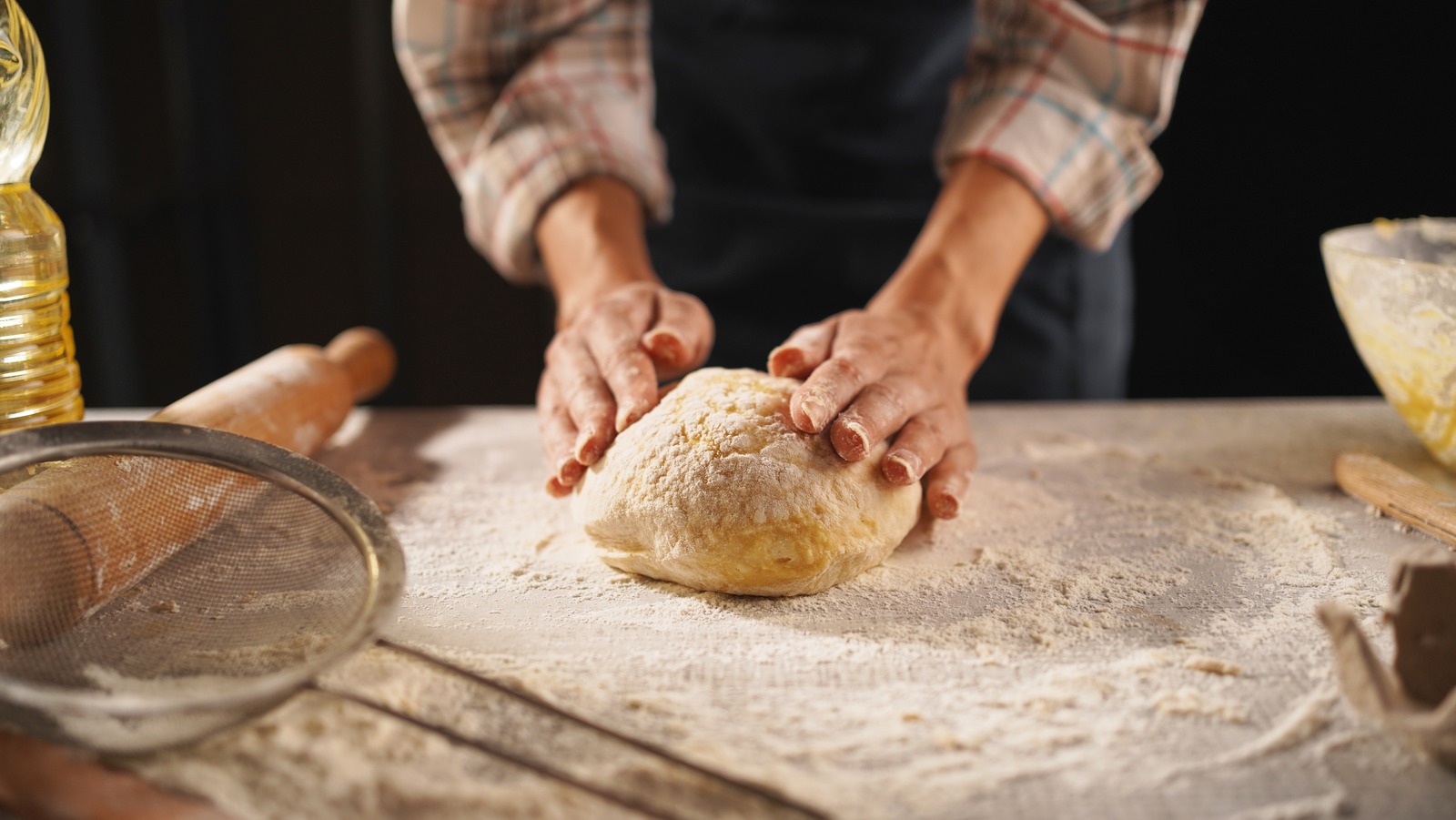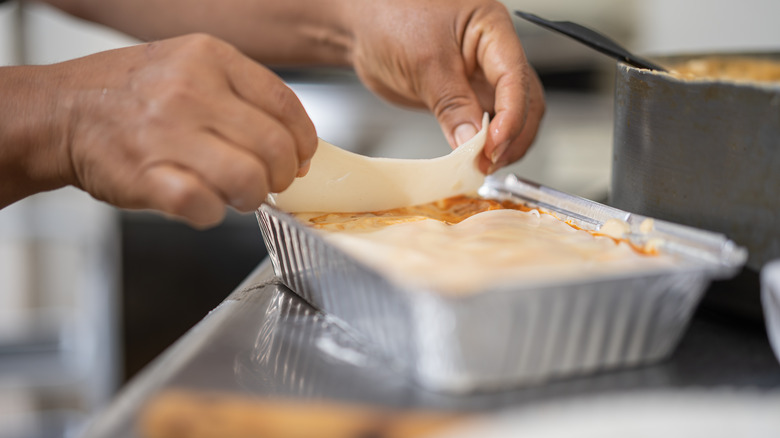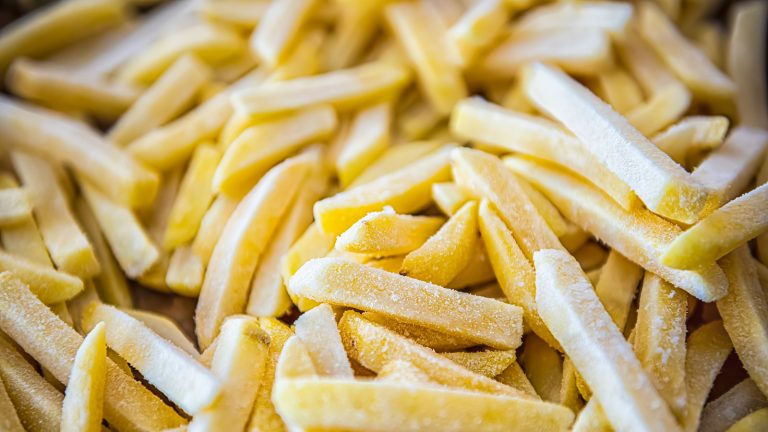We may receive a commission on purchases made from links.
Making pasta at home isn’t as complicated as it seems — it’s more about patience than skill. In fact, most homemade pasta requires only two ingredients! Just eggs and some flour specifically used for pasta are all you need, plus a little salt and water to help with texture as needed.
Certain pasta shapes are more complex than others. To make radiatori, for example, you’d at least need an old-school gnocchi board, if not a full-blown pasta maker. When it comes to lasagna, however, a rolling pin and a little elbow grease will suffice for chef-approved results. Combining your ingredients by hand or in a stand mixer, you’ll create a ball of straightforward pasta dough. Let the dough rest for about 30 minutes to make rolling it out easier.
To create lasagna sheets, you’ll need a good amount of counter space. Roll out your dough with a rolling pin until it’s thin enough to see light through when you hold it up. Remember: lasagna noodles cook in the oven; we don’t boil them in water like other noodles. So, if the sheets are too thick, you may wind up with a chewy, undercooked layer that ruins the whole dish. Uniform thickness is the goal, and the technique for achieving this is simple: roll, rotate 45 degrees, roll again, and repeat. If you think your sheets are too thick (or you just prefer that chewier bite), do a quick 30-second blanch in boiling water (known as parboiling) to soften them before baking.
Slicing and perfecting homemade lasagna noodles
Once your pasta sheet is thin and smooth, it’s time to cut your noodles! A sharp knife works fine to cut lasagna sheets (avoid a serrated knife, which could tear the delicate sheets), but we’d suggest using a pasta wheel. Choose one with fluted edges, like this affordable Fusiontex Pastry Wheel, to make the job smoother and to give the pasta edges that squiggly look you’ll find in store-bought lasagna sheets.
Of all the common mistakes made when cooking lasagna (there are plenty), one that’s easy to avoid is using mismatched or broken pasta to fill a layer. With store-bought sheets, we’re often forced to haphazardly piece them together like Tetris blocks to form one layer. This can lead to gaps in the layer, or worse, overlapping sheets that are thicker in some areas than others, which can make the whole thing fall apart when you try to slice into it. When making your own, take advantage of the control: Cut full, consistent pieces that match your pan. Don’t just eyeball it; measure it against your baking dish for precision.
If you’re hoping to dig into your lasagna ASAP, just let the sheets dry out for about half an hour before cooking (a perfect time to start on your basic all-purpose tomato sauce!). Otherwise, you can air-dry the pasta overnight and store the dried, hardened sheets in a paper bag for about three days.






